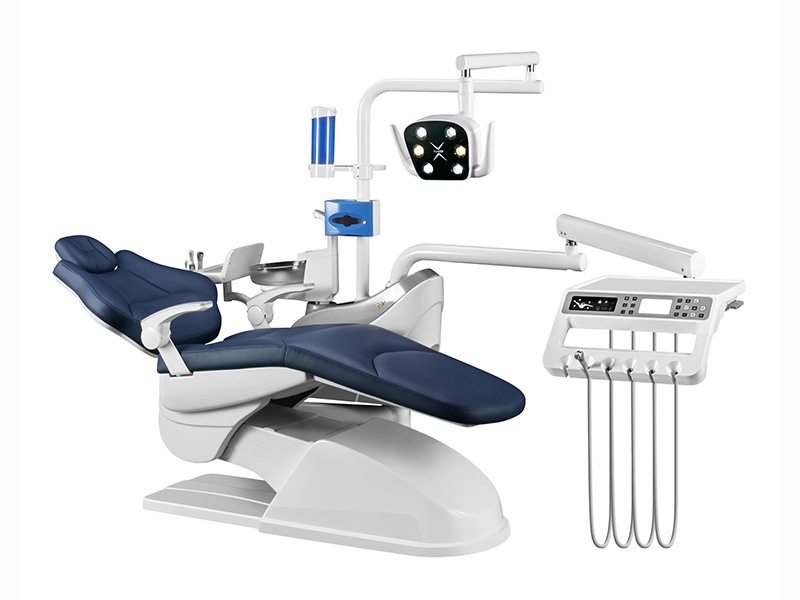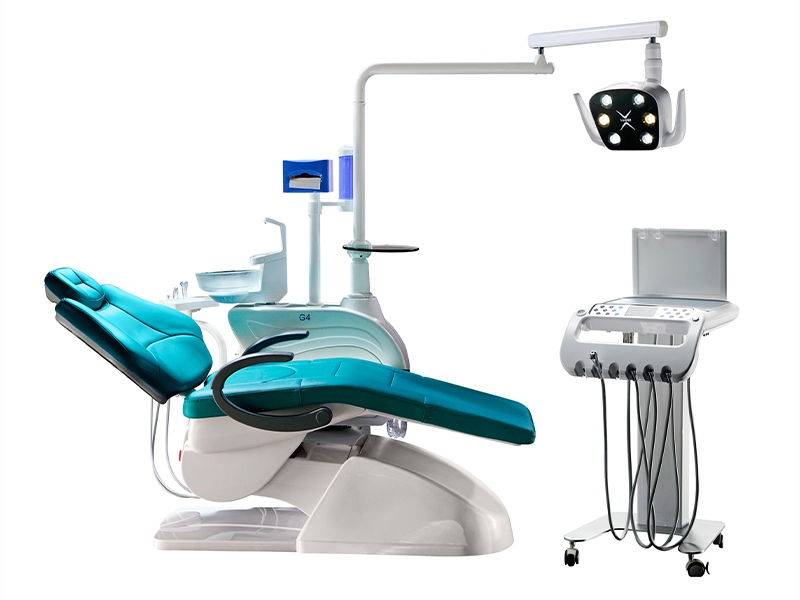What Is The Difference Between Dental Unit And Dental Treatment Chair?
In modern dentistry, the terms "dental unit" and "dental treatment chair" are frequently confused or used interchangeably by both professionals and patients. However, these represent fundamentally different equipment components with distinct functions, capabilities, and considerations for dental practice setup. This comprehensive guide clarifies these differences to help dental professionals make informed purchasing decisions.
Understanding Dental Treatment Chairs
A dental treatment chair is the specialized seating equipment designed to position patients comfortably during dental procedures. According to the American Dental Association, proper patient positioning is crucial for both treatment efficacy and practitioner ergonomics.

Modern dental treatment chairs include several essential components:
Core Components:
-
Padded seat and backrest with antimicrobial upholstery
-
Adjustable headrest for precise positioning
-
Ergonomic armrests and footrest
-
Motorized positioning system
-
Control panel for position adjustments
-
Stable base with locking mechanism
The primary function of a dental treatment chair is to support patients in positions that provide optimal access to the oral cavity while ensuring patient comfort during procedures. These chairs typically offer programmable positions including patient entry/exit, treatment, and rinsing positions.
Research published in the Journal of Clinical and Diagnostic Research indicates that proper chair design significantly impacts treatment outcomes by reducing patient anxiety and improving practitioner access.
Defining Dental Units: The Complete Treatment System
A dental unit (or dental treatment unit) represents an integrated clinical workstation that incorporates the treatment chair as just one component within a comprehensive system. The FDI World Dental Federation recognizes dental units as complete delivery systems for modern dental care.

A complete dental unit typically includes:
1. Patient Support System:
-
Dental treatment chair
-
Instrument delivery system
-
Operating light
2. Practitioner Systems:
-
Handpiece connections and controls
-
Air/water delivery systems
-
Integrated technology interfaces
-
Storage solutions
3. Utility Infrastructure:
-
Suction and evacuation systems
-
Water purification system
-
Compressed air delivery
-
Power distribution
-
Waste management
The dental unit functions as a centralized hub where all essential treatment tools, utilities, and controls converge to enable comprehensive dental care. Modern units from manufacturers like Hager Dental integrate digital technologies including imaging systems and electronic health record interfaces.
Key Differences: Comparative Analysis
Understanding the functional and operational distinctions helps clarify equipment planning and procurement decisions:
| Feature | Dental Treatment Chair | Dental Unit |
|---|---|---|
| Primary Purpose | Patient positioning and support | Complete treatment delivery |
| Functionality | Limited to patient positioning | Comprehensive treatment capability |
| Components | Chair structure, padding, positioning controls | Chair plus instruments, delivery systems, utilities |
| Independence | Can function independently for basic examination | Requires infrastructure connections |
| Installation Complexity | Moderate - requires power and floor mounting | High - requires water, air, drainage, and electrical |
| Maintenance Requirements | Primarily mechanical and upholstery | Complex systems including water lines and electronics |
| Approximate Investment (2025) | $5,000-$20,000 | $15,000-$100,000+ |
Factors Influencing Selection
When equipping a dental practice, several considerations should guide equipment selection:
1. Practice Specialization Different dental specialties require specific features. Orthodontic practices benefit from chairs with greater vertical range, while surgical specialties need chairs with superior stability and patient supports.
2. Space Constraints Practice layout significantly impacts equipment selection. Compact dental units with optimized footprints maximize operatory space efficiency in smaller practices.
3. Ergonomic Requirements Practitioner health depends on ergonomic equipment design. Modern units feature balanced instrument delivery with reduced reaching requirements to prevent musculoskeletal disorders.
4. Technology Integration Digital dentistry requires compatible units. Leading models support intraoral scanners, CAD/CAM systems, and practice management software integration.
Modern Innovations Meeting 2025 Standards
The dental equipment industry continues evolving with technological advancements:
1. Enhanced Infection Control
Post-pandemic designs prioritize infection prevention with:
-
Touchless controls
-
Automated disinfection cycles
-
HEPA filtration
-
Antimicrobial surfaces
2. Improved Patient Experience
Patient comfort innovations include:
-
Climate-controlled surfaces
-
Integrated entertainment systems
-
Stress-reduction technologies
-
Accommodations for patients with mobility limitations
3. Environmental Sustainability
Modern units address ecological concerns through:
-
Energy-efficient components
-
Water conservation systems
-
Recyclable materials
-
Reduced chemical usage
Maintenance and Hygiene Considerations
Maintenance requirements differ significantly between basic chairs and complete units:
1. Dental Treatment Chairs
Require routine inspection of:
-
Mechanical joints and motors
-
Upholstery integrity
-
Control system functionality
-
Weight capacity verification
2. Dental Units
Demand comprehensive maintenance including:
-
Water line biofilm prevention
-
Suction system disinfection
-
Air compressor filtration
-
Handpiece connection calibration
-
Electronic system updates
The Centers for Disease Control and Prevention publishes guidelines for dental equipment maintenance to ensure both patient safety and equipment longevity.
Conclusion: Making Informed Decisions
The distinction between dental treatment chairs and dental units has significant implications for practice setup, budget planning, and patient care capabilities. While a chair represents a fundamental patient support component, a complete dental unit delivers comprehensive treatment functionality through integrated systems.
Dental professionals should evaluate their practice requirements, specialty focus, and long-term goals when deciding between standalone chairs and complete units. Patients benefit from understanding this equipment distinction to better appreciate the technological sophistication supporting their dental care.
For detailed specifications and current models meeting 2025 standards, dental professionals can explore comprehensive resources from established manufacturers and industry associations dedicated to advancing dental technology and patient care.

